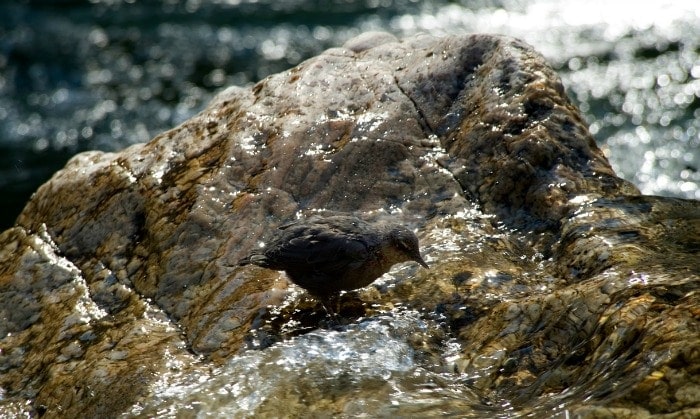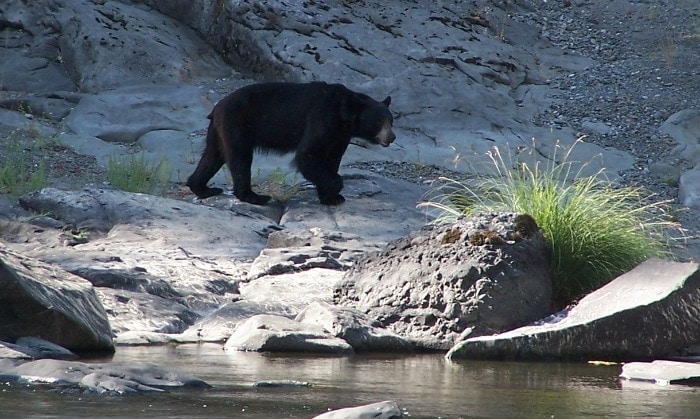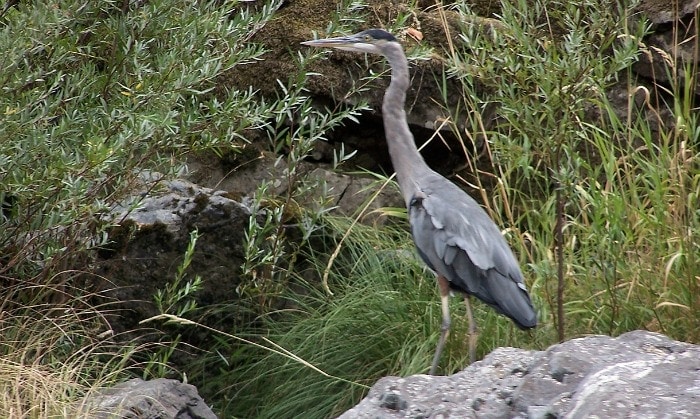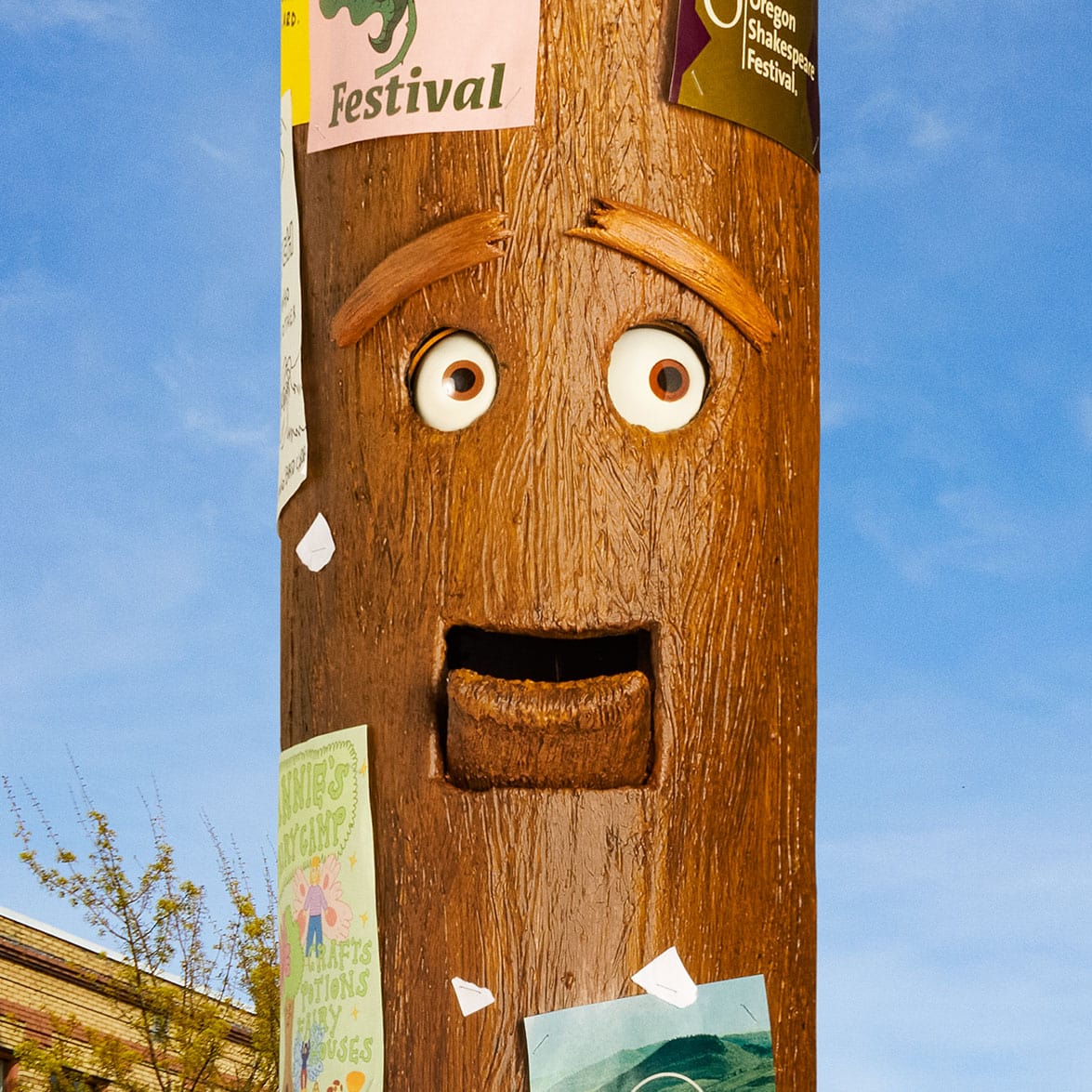Sometimes, being on the Rogue River is like being in the middle of a Nature Channel documentary: birds and animals and fish, oh my! The Rogue has whitewater, scenery, history and campsites that are on par with the best rivers in the lower 48, but few others compare to the Rogue when it comes to seeing wildlife. The incredibly rich and diverse flora and fauna was a primary reason for protecting the Rogue as one of the original eight Wild and Scenic Rivers in 1968.
Why all the wildlife? Like the sign in Grants Pass says: It’s The Climate. The Rogue canyon gets a lot of rain in the winter and a lot of sun in the summer which produces a long growing season and a lush vegetative blanket that serves as a productive bottom level of the food chain. The proximity to the ocean and the continual influx of new protein via the prolific salmon spawning migrations also contribute to the rich environment. The salmon not only feed the bears and otters, but beautifully, the nutrients from their spent carcasses contribute back to fertility of the soil, which makes the grass grow which allows the insects to prosper which feeds the fish and on and on and on; the Rogue River circle of life.
Today, people who float the Rogue are thrilled by the chance to spot some iconic animals of the Wild West. It would not be unreasonable to think that with just a little luck, the observant and diligent Rogue River floater could score The Rogue River Triple Crown of Grand Slams.
The Mammal Grand Slam
- Black-tailed deer (chance of seeing one during a 4 day trip: 95%)
Improve your chances: Watch the shoreline in the morning or evening or stop in at Rogue River Ranch or Paradise Lodge where the deer graze calmly on the irrigated lawns.
Fun fact: Black-tail deer are a subspecies of Mule deer. - North American river otter (chance of seeing one during a 4 day trip: 65%)
Improve your chances: Be quiet and watch for little heads creating a subtle wake as the otters swim right along the shoreline.
Fun fact: Otters can hold their breath for up to four minutes at a time and travel over ¼ mile underwater. - American black bear (chance of seeing one during a 4 day trip: 50%)
Improve your chances: Ride in the lead raft during the day and watch the shoreline at dusk.
Fun fact: Black bears are omnivorous and will eat anything from tiny ants to massive salmon and from blackberries to grass. - North American beaver (chance of seeing one during a 4 day trip: 10%)
Improve your chances: Beavers are active almost exclusively at night so you’ll need to stay up really late or get up really early.
Fun fact: When alarmed, beavers will slap their tails on the surface of the water to alert their friends of an intruder.
The Bird Grand Slam
- Osprey (chance of seeing one during a 4 day trip: 95%)
Improve your chances: Look in the tops of tree snags and listen for their distinctive whistle.
Fun fact: Osprey talons are double-jointed allowing them to easily grasp a branch perpendicularly or a fish parallelly. - Ouzel (chance of seeing one during a 4 day trip: 95%)
Improve your chances: Watch the rocks in the middle of rapids or in cascading sidestreams.
Fun fact: Ouzels are also called “Dippers” and they build their nests near or even behind waterfalls. - Great Blue Heron (chance of seeing one during a 4 day trip: 95%)
Improve your chances: Look closely along shore (where they wade and hunt for steelhead smolts) and listen for their distinctive squawk when they are alarmed and take to flight.
Fun fact: Herons nest in large colonies (heronries or rookeries) with up to a dozen nests in a single tree and hundreds of nests within a short distance of each other. - Bald Eagle (chance of seeing one during a 4 day trip: 50%)
Improve your chances: Pay attention in the lower part of the canyon, closer to the ocean, and look for soaring birds way up high in the sky.
Fun fact: The Bald Eagle is the National Bird AND the National Animal of the United States
The Aquatic Grand Slam
- Rough-skinned newt (chance of seeing one during a 4 day trip: 95%)
Improve your chances: You can find them swimming in almost every sidestream and occasionally in the river.
Fun fact: Newts are poisonous to eat, (hence the bright orange warning color). - Steelhead (chance of seeing one during a 4 day trip: 90%)
Improve your chances: Many of the small fingerlings seen schooling around the weed beds and at creek mouths are steelhead smolts on their way to the ocean.
Fun fact: Hatchery raised steelhead have their adipose fin clipped to distinguish them from wild steelhead. - Salmon (chance of seeing one during a 4 day trip: 50%);
Improve your chances: Look for them trying to leap up Rainie Falls and at the mouths of colder sidestreams.
Fun fact: Coho Salmon are commonly called “Silver Salmon”; Chinooks are called “Kings” - Sturgeon (chance of seeing one during a 4 day trip: 10%);
Improve your chances: Keep your eyes open in the deep calm stretches of Mule Creek and Huggins Canyons where they have been known to “porpoise” up out of the depths like a submarine periscope.
Fun fact: White Sturgeon can be over 12 feet long and weigh more than 1,000 pounds.



